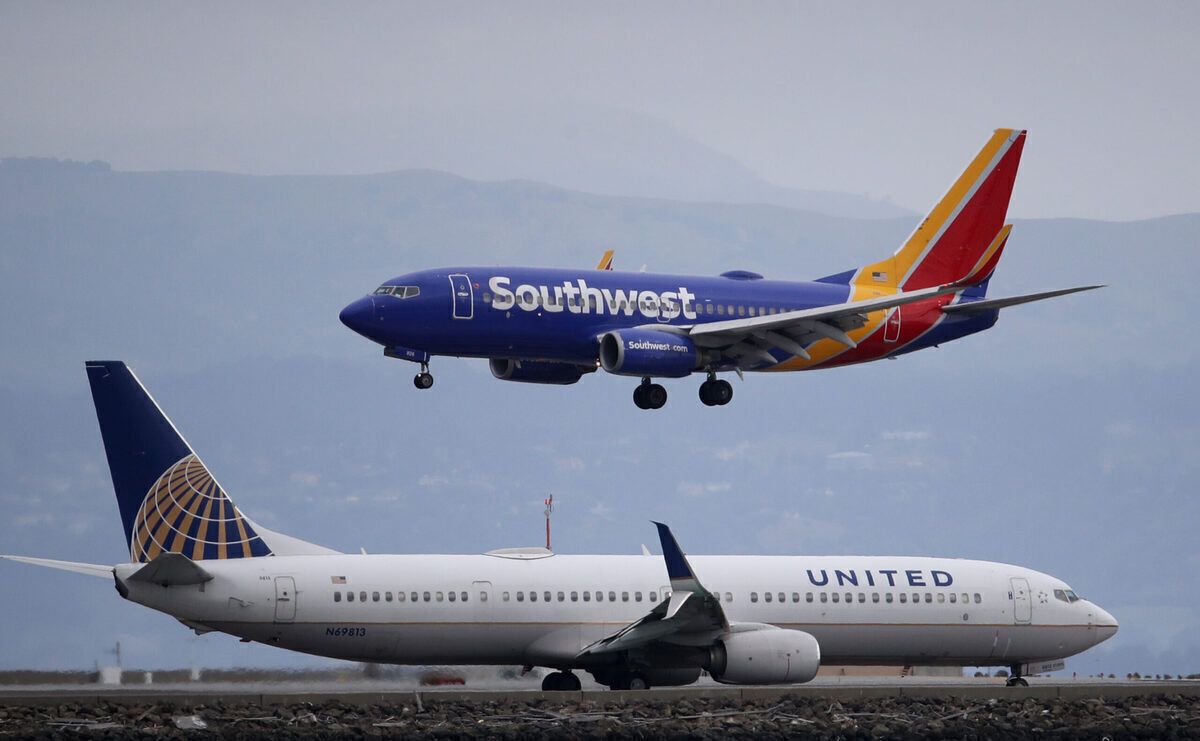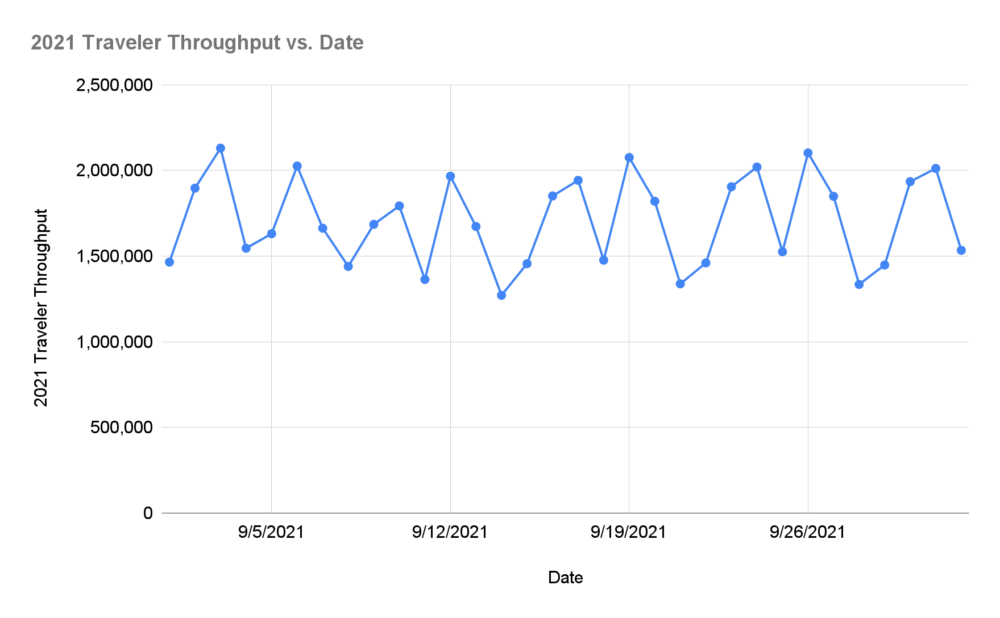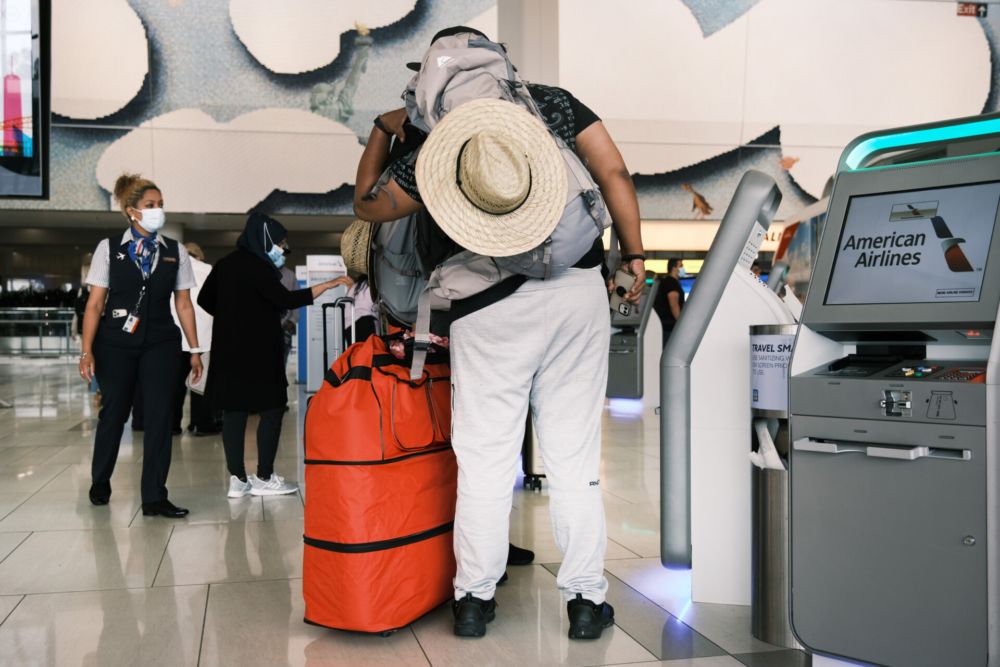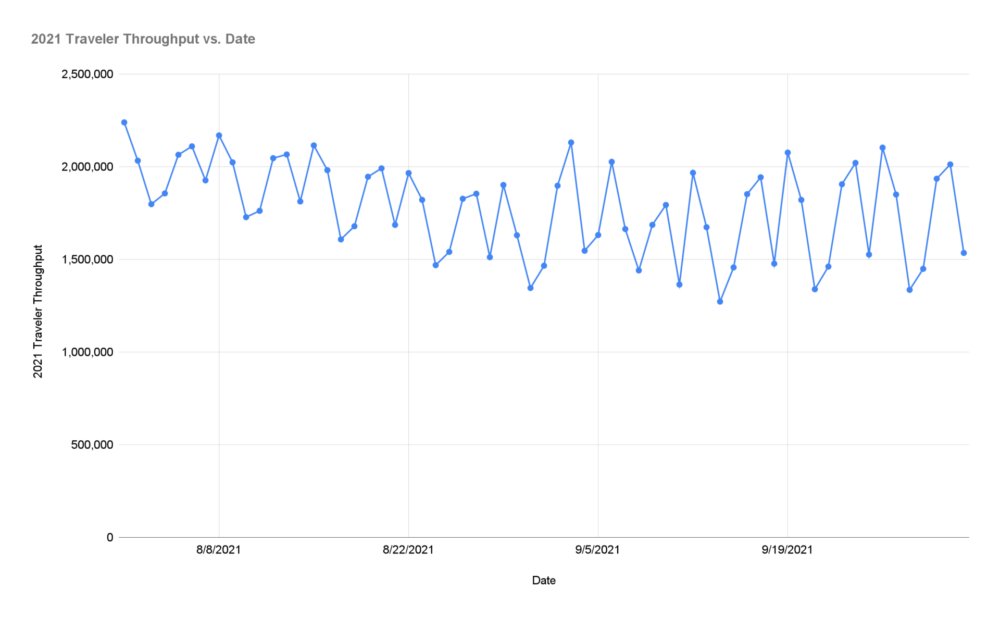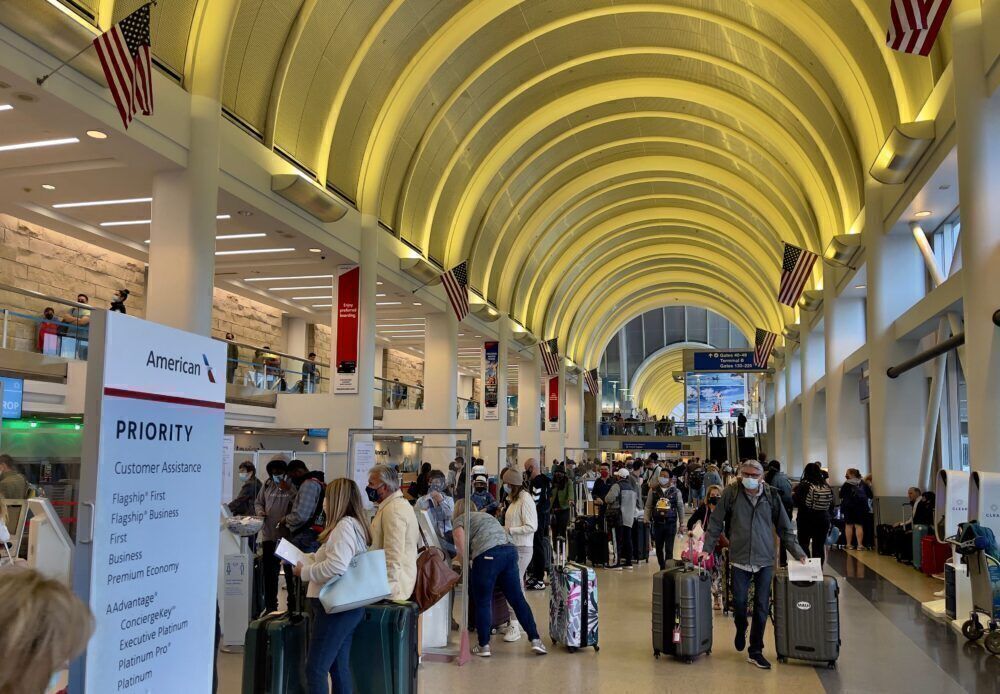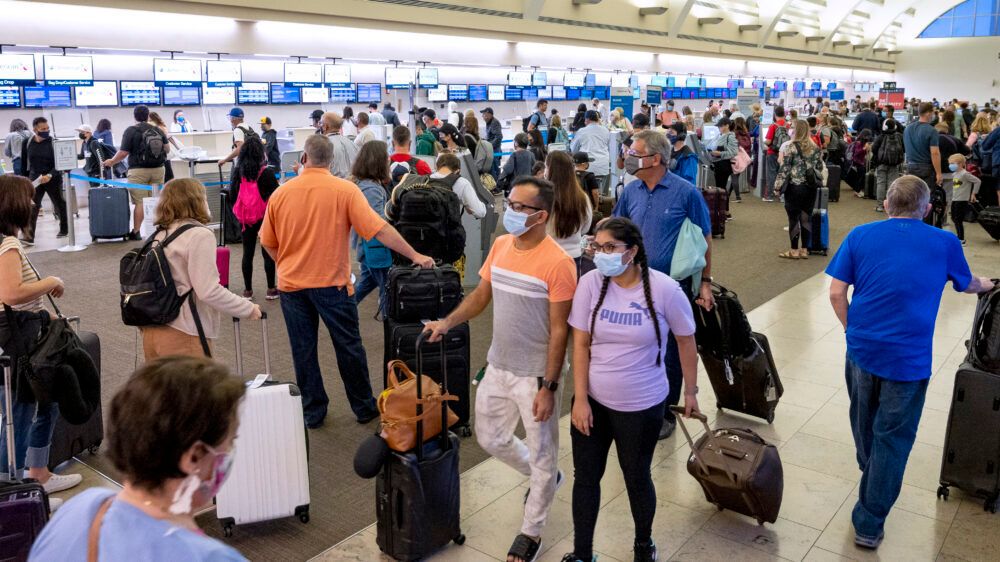The airline recovery is continuing in the United States. After a rise in cases and hospitalizations associated with the Delta variant hit the US in August, airlines began to sound the alarm on a rise in close-in cancellations and booking softness. Even with some structural hurdles in the fall, passenger numbers are still relatively strong, indicating the ongoing recovery of the airline industry.
TSA numbers post-Labor Day
The following is a graph of daily passenger numbers since September 1st:
The first peak is the Labor Day holiday, which fell entirely in September this year. This heavy leisure traveler weekend was excellent for airlines, as was expected. While there may have been some travelers who decided to postpone or cancel their vacation plans, it was still a largely successful holiday period for airlines.
First off, there are some day-of-the-week swings. Tuesdays and Wednesdays are typically heavier business travel days. Given that some volume of business travel has not returned yet, it is expected that those days would see fewer passengers per day in the overall week.
Second, since Labor Day, the weekends have still been relatively strong for airlines. Leisure travelers typically travel around Saturdays and Sundays to maximize days off. Furthermore, the symbolic two-million passengers per day mark have been crossed several times on the weekends since Labor Day. It should be noted that this happened later in September, by which point the spread of the virus in key vacation hotspots like Florida had shifted.
Stay informed: Sign up for our daily and weekly aviation news digests.
What about since August?
Looking at passenger numbers from August 1st through early October, some other trends become clear:
The spike in early September is the Labor Day holiday. Now, from this graph, several trends are clear. First and foremost, there is an evident decline in daily passenger numbers throughout August. Airlines attributed a large part of that to the Delta variant. Things stabilized in September and have been relatively constant since then.
Now, some structural factors also play into daily numbers. For example, schools across the country are by and large back in session. The same is true with colleges. The rise of remote work and virtual schools throughout the crisis led to a change in some travel patterns. Multiple airlines reported leisure travelers taking business traveler-style itineraries to leisure destinations.
With schools by and large back in person, families are hugging their travel plans around the weekend. Some large offices moved their return to office plans back, but more business travelers are taking to the skies now than in April or May. Business itineraries may look different – for example, fewer trips to cities like Tokyo or Sydney are on the docket.
Where does the recovery go from here?
The fall is typically a little quieter for airlines. Business travel usually helps keep the planes full as kids go back to school. Families tend to wait for major vacation periods like Thanksgiving in November and Christmas in December before taking a trip. This is also part of the reason why some airlines have summer-seasonal flying that dies down in October and early November and comes back in time for Thanksgiving and the December holiday period.
The recovery was never expected to be linear. Getting out of a health crisis is not like getting out of a financial crisis. However, one thing that has been clear is the importance of vaccinations. The data has shown that vaccinations significantly decrease the risk of hospitalizations and death, and many countries have reopened their borders for vaccinated foreigners.
Ultimately, the recovery is ongoing, and there are plenty of reasons for airlines to be hopeful in 2022. Vaccinations are continuing worldwide, which should be a catalyst for further recovery in markets like Asia, Oceania, or Latin America, where the health crisis has not reached a turning point as it has in places like the US, Canada, and Europe. Some airlines abroad are also coming out ahead with requirements for their passengers to be vaccinated for some or all itineraries.
While summer 2021 numbers are not the norm in the fall, it was never anticipated that the strong leisure surge in June, July, and August would continue into the fall. However, a reason for optimism is that some business travel is coming back, which will be a crucial part of the recovery.

